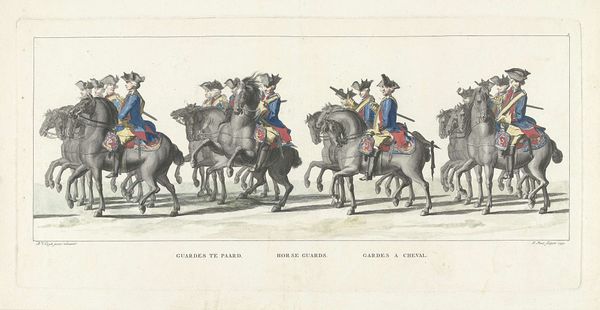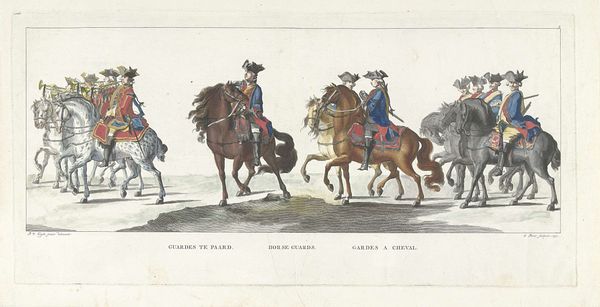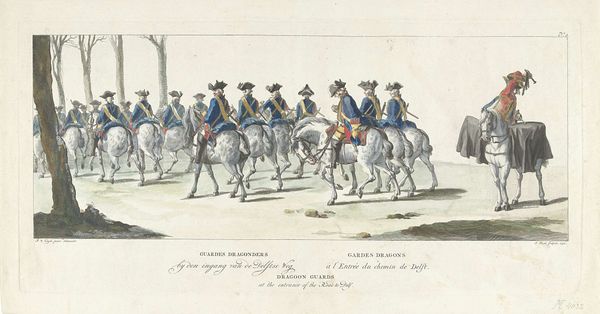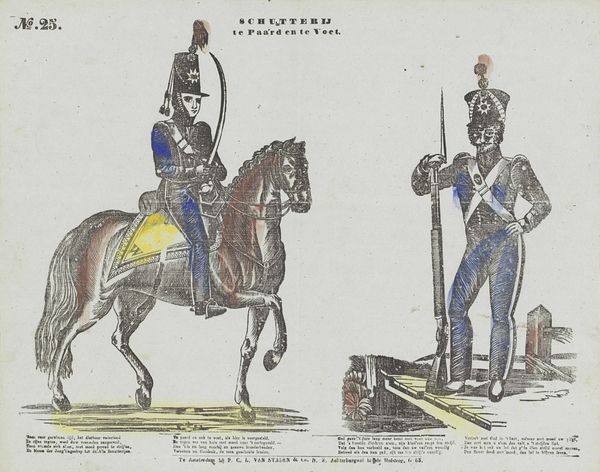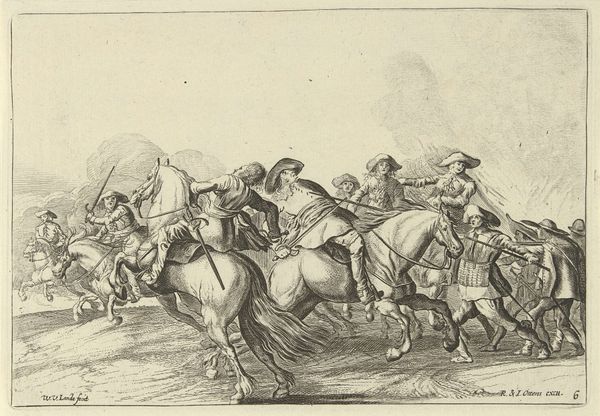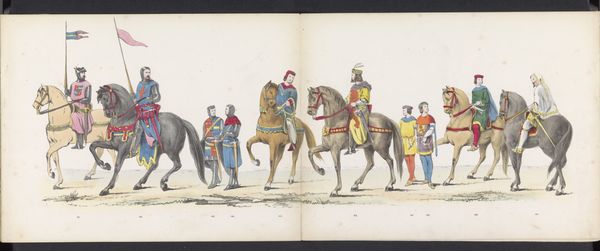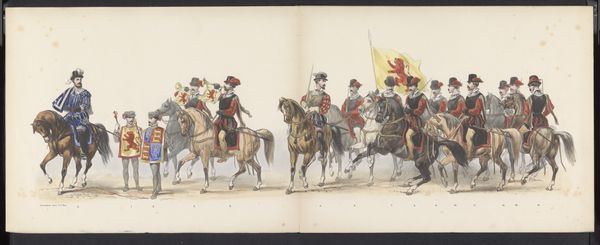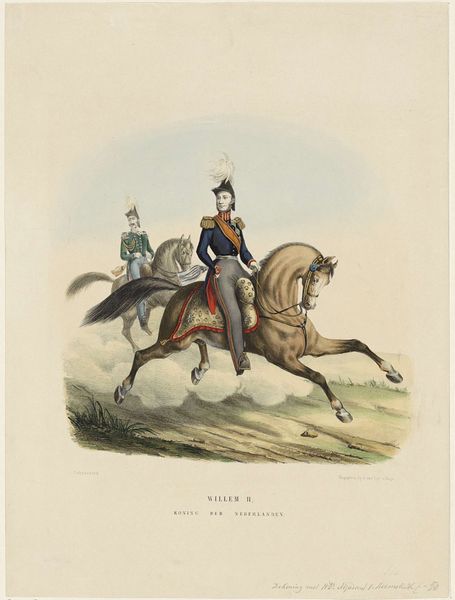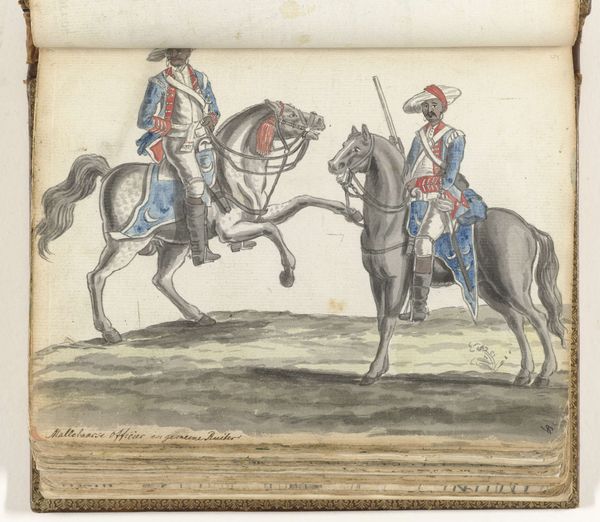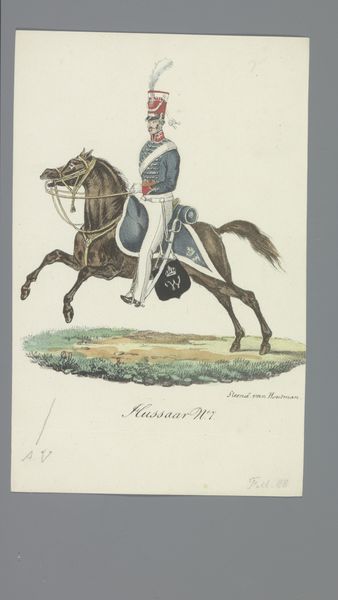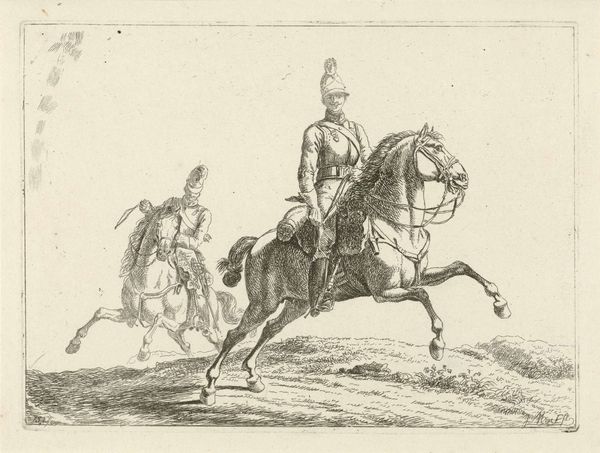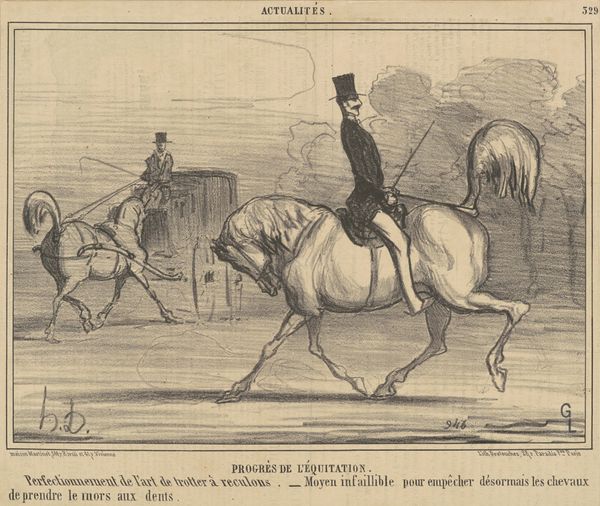
drawing, print, ink, engraving
#
drawing
# print
#
landscape
#
figuration
#
ink
#
genre-painting
#
history-painting
#
academic-art
#
engraving
Dimensions: height 270 mm, width 560 mm
Copyright: Rijks Museum: Open Domain
Editor: We’re looking at "Lijkstatie van Willem IV, 1752, plaat 4" by Jan Punt, a print executed in ink and engraving. It's striking how linear everything is, and the subdued color palette creates a rather somber tone despite the lively horses. How would you interpret the formal elements at play? Curator: Note the precision of line. The hatching defines form without relying on heavy chiaroscuro, a hallmark of the engraving technique. The repetition of the figures, particularly the horses, creates a rhythmic visual pattern, doesn’t it? Each horse, while similar, has subtle variations in pose and musculature. Consider how this affects the viewer's perception of depth. Editor: It gives a sense of receding space but feels very two-dimensional. Is that deliberate, do you think? Curator: Precisely. Observe the use of parallel lines, which emphasize the flatness of the picture plane even while attempting to render depth. This tension between flatness and depth is, in my view, essential to understanding the work’s construction. The formal structure seems to prioritize design over illusion. Editor: So the emotional coolness derives less from the subject matter and more from the way it's constructed? Curator: Indeed. The formal vocabulary - the stark lines, the controlled tonal range, the patterned repetition - constructs the emotional tenor. What else do you observe regarding the treatment of form? Editor: The lack of a strong focal point is interesting. My eye doesn’t settle anywhere. Curator: Exactly. The eye is invited to scan the surface, tracing the lines and shapes without a narrative hierarchy. The work invites contemplation of form itself. Editor: That's a fascinating insight. I was initially caught up in trying to read the historical event, but I see how much is communicated through purely formal decisions. Curator: Formal analysis refines and deepens our interpretations, highlighting how meaning is embodied within the visual structure. It provides an entryway to decode artwork's construction beyond the explicit subject matter.
Comments
No comments
Be the first to comment and join the conversation on the ultimate creative platform.
